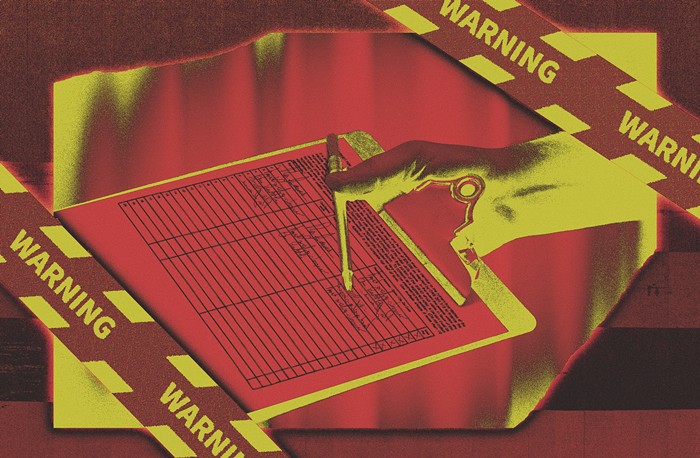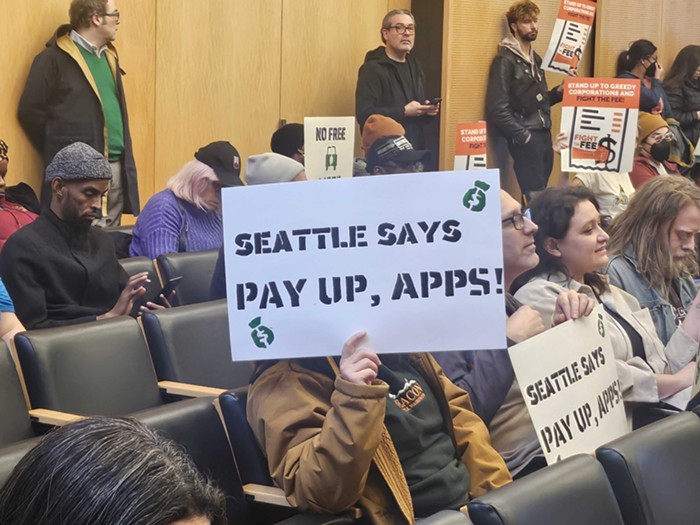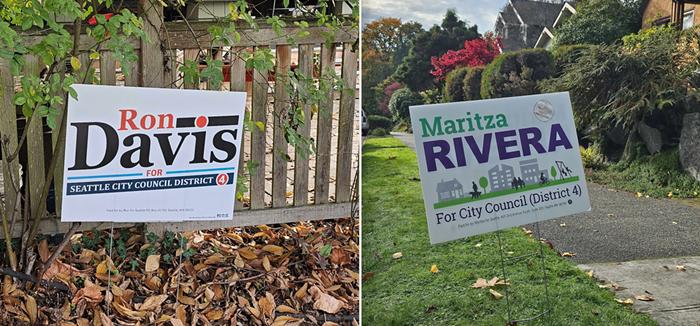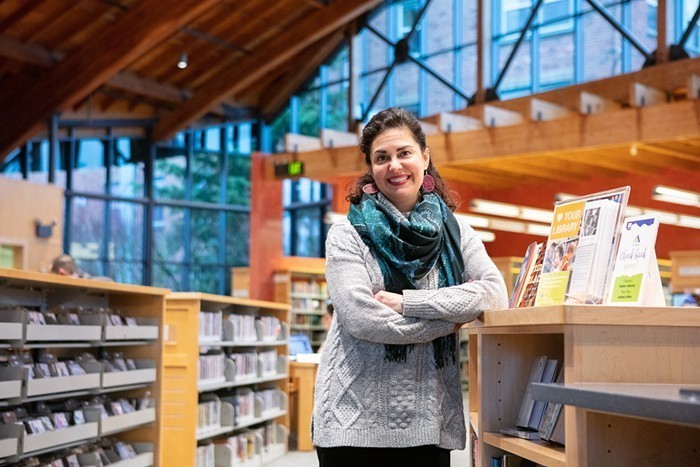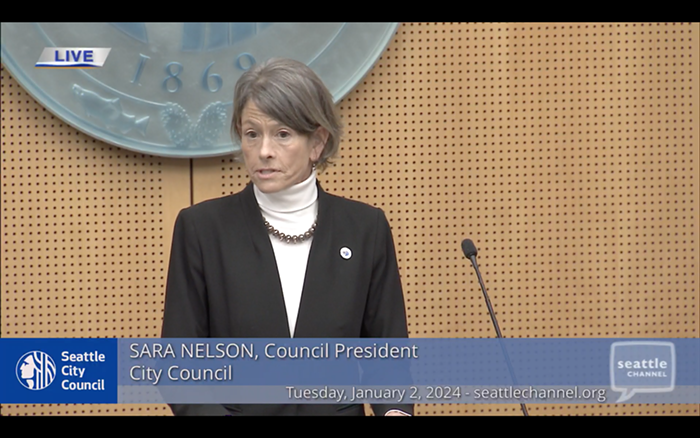1.
A majority of the Sound Transit board now appears to be leaning toward a vote on a transit-only ballot measure in 2008.
Sound Transit's 18-member board has until March 29 to decide if it wants to put a transit package on the ballot this year, and which projects to put in front of voters. On March 6, staff will present board members with a proposal to raise sales taxes in the Sound Transit area 0.4 percent—an increase that would raise about $6 billion, in 2007 dollars, over 20 years. For that amount, voters would get light rail from Husky Stadium to Northgate and from Seattle to Bellevue across I-90. The proposal would also pay for a streetcar connecting Capitol Hill to First Hill, where a planned light-rail station was eliminated; and it would include bus or commuter rail expansions in the areas that would no longer be served by light rail, including Lynnwood, Redmond, and Tacoma.
The new proposal, which would complete construction in just 12 years, is cheaper, shorter, and, board members hope, more politically palatable than the "Roads and Transit" ballot measure voters rejected last year, which would have raised $10.8 billion for transit projects, including light-rail expansion in King, Pierce, and Snohomish Counties. The board also contemplated a smaller plan, which would have raised taxes three-tenths of 1 percent; but at that level, Sound Transit spokesman Ric Ilgenfritz says, "we'd just be putting it all into light rail to Northgate and Bellevue. You'd have two good segments, but no connections."
The biggest difference between last year's ballot measure and the new scaled-back transit package is that while previous plans called for continuous light rail from Lynnwood to Tacoma, the new proposal relies heavily on bus rapid transit (BRT) and commuter rail. "What you see here is a different vision [than Roads and Transit]," Ilgenfritz says. "Obviously, it's not what we proposed in the last plan. But with this level of revenue and the time horizon [of 12 years], we can't afford to extend light rail that far south."
Even Sound Transit supporters acknowledge that the BRT in the plan wouldn't be true "rapid transit," because it would run in HOV lanes along with carpools and other buses. Additionally, because the plan includes more buses and less light rail, any new proposal will probably include substantially more parking than Roads and Transit. The total number of new parking spots being contemplated, according to planning documents, is greater than 10,000, although it's unlikely that much parking will be built.
"It's unfortunate that we can't go to a bigger system, but we're digging our way out of a 35-year hole," says King County Council Member Larry Phillips, a supporter of the 2008 proposal. "The public told us, 'give us fewer projects to consider that give us a bigger bang for the buck.' So that's what we did."
2.
Coming out of 2007, board members and legislators were understandably skittish about moving forward with a large new transit proposal this year, with many leaders leaning toward a vote in 2010. Initially, it appeared that neither the governor nor the legislature would get behind 2008. Governor Christine Gregoire, it was generally believed, would not support a tax increase this year, when she's up for reelection. Sound Transit supporters also worried that the state legislature would take steps to dissolve or reorganize the agency.
Luckily for Sound Transit, none of its worst fears were borne out. Legislation by senate transportation chair Mary Margaret Haugen to dissolve Sound Transit failed to make it past the cutoff date for legislation to move out of committee; subsequent efforts to prevent Sound Transit from going forward in 2008 failed as well. Subsequently, Governor Gregoire said she would support a light-rail plan that went "north before south," ["Grading the Governor," Josh Feit, Feb 20], as this plan does. The state secretary of transportation, Paula Hammond, sits on the Sound Transit board and is expected to follow the governor's lead.
3.
Board support for the tentative proposal breaks down, for the most part, along fairly predictable geographic lines. Currently, all members of the King County Sound Transit delegation, including Seattle Mayor Greg Nickels, Seattle City Council President Richard Conlin, and Phillips, support going to the ballot in 2008. "I've been keeping it alive," Phillips says, with characteristic modesty. But "the more we analyze '08, the more we realize we'd be nuts not to put something out there to the presidential year electorate"—Democratic voters who Phillips believes are likely to support transit. Conlin, who just joined the Sound Transit board this year, is less adamant; he says that although right now, "I'm for it," it's "possible that in the end, I may vote with the majority if the majority is against it."
The only outliers among the King County delegation are reportedly King County Council Member Julia Patterson (who did not return a call for comment) and King County Executive Ron Sims, who has not been attending Sound Transit meetings. "He's waiting for the perfect plan," Phillips says derisively. Sims did not return a call for comment.
Opinion on the Eastside is reportedly more divided, with several representatives waiting to make up their minds. Redmond Mayor John Marchione, who took his seat on the Sound Transit board just two weeks ago, says he's been busy "talking to other board members and constituents" about their concerns with the proposal. "I'm very cognizant of the economy and what it might do this year—bad economies don't produce positive votes on tax increases." Marchione says he's "disappointed that light rail doesn't reach all the way to Microsoft," but adds, "it might be a political necessity. People want to build this system in smaller bites and they want to see some success" before moving forward. Fred Butler, the deputy council president of Issaquah, meanwhile, says he's "not really prepared to say one way or another," although if pressured, "I'd probably say I lean just a little bit more toward 2008. But I have certainly not made up my mind and probably will not do so until I have to, in late March."
None of the Pierce County representatives contacted for this story, including County Executive John Ladenburg, returned calls; however, numerous sources report that Pierce County board members are leaning toward a vote in 2008. Meanwhile, Snohomish County board members, including County Executive Aaron Reardon, want to wait until 2010 so that they can come up with a plan that better serves their county. "In Snohomish County, we don't have the taxing capacity [of Seattle], so whatever we do has to be very strategic," Reardon says, adding that the current plan "really would not pass the straight face test with north-end voters." If the board decides to move forward in March, it will have until late June or early July to come up with a final plan to put on the ballot in November. ![]()

